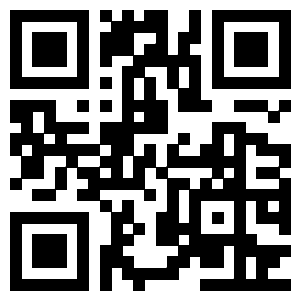Word自定义右键菜单的VBA代码示例
本Word的VBA代码的功能简介:在右键文本菜单的中部位置(相当于右击文本时出现的菜单),添加一个自定义命令,并执行相应过程。
Private Sub Document_Close()
On Error Resume Next
Application.CommandBars("Text").Controls("Test").Delete ’恢复原有菜单
End Sub
Private Sub Document_Open()
Dim Half As Byte
On Error Resume Next
Dim NewButton As CommandBarButton
Application.CommandBars("Text").Controls("Test").Delete ‘预防性删除
Half = Int(Application.CommandBars("Text").Controls.Count / 2) ‘中间位置
Set NewButton = Application.CommandBars("Text").Controls.Add(Type:=msoControlButton, Before:=Half)
With NewButton
.Caption = "Test" ’命令名称
.FaceId = 100 ’命令的FaceId
.Visible = True ’可见
.OnAction = "MySub" ‘指定响应过程名
End With
End Sub
Sub MySub()
MsgBox "It’s A Test For CommandBars(""Text"")!", vbOKOnly + vbInformation
End Sub
Sub ComReset() ‘重新设置右键菜单,彻底恢复默认设置
Application.CommandBars("Text").Reset
End Sub
生成具有Commandbars(“Toolbar list”)或者当于CommandBars("View").Controls("工具栏(&T)")中的命令按钮形式:
Private Sub Document_Close()
On Error Resume Next
Application.CommandBars("Text").Controls("New Menu").Delete ’恢复原有菜单
End Sub
Private Sub Document_Open()
Dim i As Byte, Half As Byte, strName As String, NewButton As CommandBarPopup
Dim MenuAdd As CommandBarButton
On Error Resume Next
Application.CommandBars("Text").Controls("New Menu").Delete ‘预防性删除
Half = Int(Application.CommandBars("Text").Controls.Count / 2) ‘中间位置
Set NewButton = Application.CommandBars("Text").Controls.Add(Type:=msoControlPopup, Before:=Half)
With NewButton ’这是弹出式菜单即右边带有小三角型的
.Caption = "New Menu" ’命令名称
.Visible = True ‘可见
End With
For i = 1 To 4 ’新建四个子命令,批量生成
strName = "Menu" & i
Set MenuAdd = NewButton.Controls.Add(Type:=msoControlButton)
With MenuAdd
.Caption = strName
.OnAction = "MySub"
.State = msoButtonDown ‘带勾选的命令按钮
.Visible = True
End With
Next
End Sub
Sub MySub()
Dim ActionTag As String
ActionCap = CommandBars.ActionControl.Caption
MsgBox ActionCap
Select Case ActionTag
’以此来区分各个命令并执行指定过程
End Select
With Application.CommandBars("Text").Controls("New Menu")
If .Controls(ActionCap).State = msoButtonDown Then
MsgBox "It’s A Test!", vbOKOnly + vbInformation
.Controls(ActionCap).State = msoButtonUp
Else
.Controls(ActionCap).State = msoButtonDown
End If
End With
End Sub
Sub ComReset() ‘重新设置右键菜单,彻底恢复默认设置
Application.CommandBars("Text").Reset
End Sub
以下为禁用命令和快捷键的常用方式与保存路径,提倡使用修改WORD命令更方便。
Sub Example()
‘将自定义菜单栏工具栏或者自定义键盘的改变保存于活动文档中
Application.CustomizationContext = ActiveDocument
‘利用CommandBars(Name).Controls(Caption)来定位按钮,具有唯一性
Application.CommandBars("Standard").Controls("打开(&O)...").Enabled = False ‘TRUE
‘ 利用来定位按钮,不太直观,容易受调整后的命令位置干扰
Application.CommandBars("Standard").Controls(2).Enabled = True ‘False
‘利用Findcontrol(ID:=)来定位按钮,具有唯一性,并可循环,作用多个此按钮命令
Application.CommandBars.FindControl(ID:=23).Enabled = True ‘False
‘利用CommandBars(Index).Controls(Index)来定位按钮,直观,但受调整后的命令位置干扰
Application.CommandBars(1).Controls(2).Enabled = False ‘True
End Sub
Sub FileOpen() ‘可以将命令与快捷键一并禁用
MsgBox "这是修改WORD命令/打开文件"
End Sub
Sub Sample() ’将 CTRL+O快捷键重新分配或者修改并保存于当前文档中
CustomizationContext = ActiveDocument
KeyBindings.Add KeyCode:=BuildKeyCode(wdKeyControl, wdKeyO), _
KeyCategory:=wdKeyCategoryMacro, Command:="NoFileOpen"
End Sub
Sub NoFileOpen()
MsgBox "This is only a test!"
End Sub
相关推荐
- 【word】 页边距怎么设置在哪里Word 05-20
- 【word】 如何删除Word空白页最后一页 04-22
- 【word】 Word页码怎么设置 04-15
- 【word】 word怎么自动生成目录步骤 03-31
- 【word】 Word文档删除线怎么加 02-06
- 【word】 Word文档里面的红色波浪线怎么去掉 02-06
- 【word】 Word文档怎么显示标尺 09-07
- 【word】 Word怎么把文字转换成表格 04-01
- 【word】 Word多张图片怎么对齐排版 04-01
- 【word】 Word怎么批量修改标题格式 03-19
本周热门
-
如何删除Word中"删不掉"的空白页 2016/10/29
-
word左键无法选择文字怎么办? 2016/07/29
-
WORD文档怎么在字母的正上方加上符号 2016/07/30
-
word表格不能编辑的原因,怎么解决? 2016/07/11
-
word字体间距太大而且调整不了是什么原因? 2016/07/21
-
word中的网格对齐是什么意思 2016/08/15
-
word怎么自动生成目录步骤 2022/03/31
-
word中长破折号怎么打 2015/01/05
本月热门
-
WORD 自动编号到100 编号和文字之间出现了一个很大的空格怎么办 2016/11/27
-
如何删除Word中"删不掉"的空白页 2016/10/29
-
word表格不能编辑的原因,怎么解决? 2016/07/11
-
如何将word改为 utf-8编码? 2016/11/07
-
word中不用回车怎么换行 2017/04/06
-
Word文档中万分号怎么打? 2017/02/11
-
WORD文档怎么在字母的正上方加上符号 2016/07/30
-
Word中各种通配符^?.^#.^$.^&等等的使用 2013/06/01
-
编辑word时无法选中文字怎么办 2017/04/11
-
word怎么打印小抄?word小抄排版缩印教程 2017/03/16



